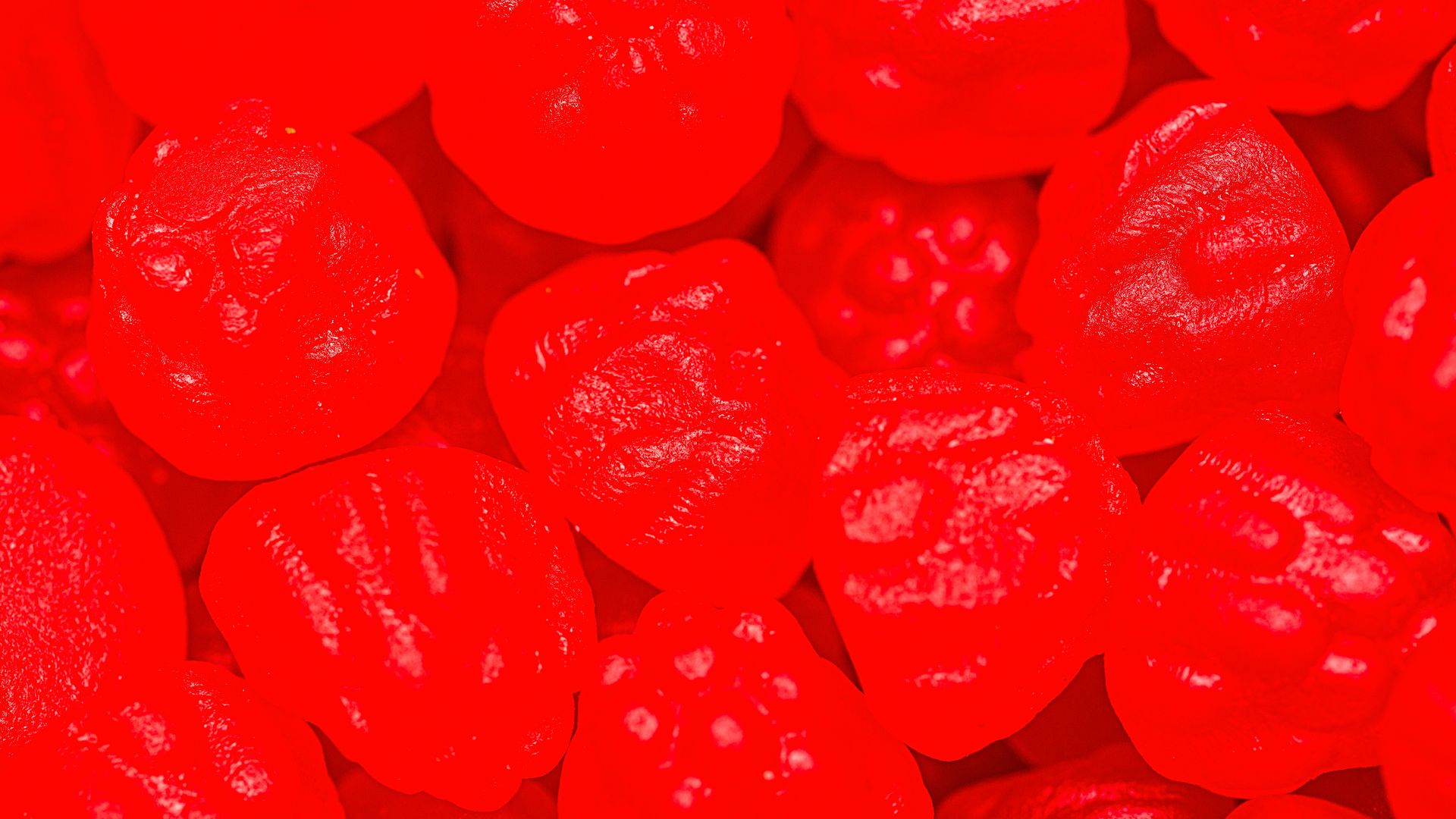
FDA bans Red No. 3 in food and drinks due to potential cancer risk
By Karah Rucker (Anchor), Kalé Carey (Reporter), Ian Kennedy (Video Editor)
The U.S. Food and Drug Administration is taking steps to remove the synthetic dye Red No. 3 from food and beverages, decades after it was linked to cancer risks. Originally approved in 1907, the additive has been a staple in many popular foods, including candy, cereal, cherries and dietary supplements.
Media Landscape
See how news outlets across the political spectrum are covering this story. Learn moreBias Distribution
Left
Untracked Bias
In 1980, studies raised alarms about its potential to cause cancer, specifically after high doses of the dye were shown to induce tumors in male rats.

Download the SAN app today to stay up-to-date with Unbiased. Straight Facts™.
Point phone camera here
Though the research prompted concern, the FDA did not take immediate action, citing the effects on humans were not shown. However, in recent years, advocacy groups and lawmakers have pressed for stronger action against the dye, prompting the FDA to revisit its stance.
On Wednesday, Jan. 15, the FDA announced plans to remove Red No. 3 from the list of approved color additives, citing the Delaney clause, a law banning any food additives known to cause cancer in both people and animals.
The Center for Science in the Public Interest, which led a petition in 2022 urging the FDA to take action, applauded the move, but called it long overdue. The group pointed to the fact that the dye had already been banned in cosmetics, but remained legal in food and drinks, until now.
“At long last, the FDA is ending the regulatory paradox of Red 3 being illegal for use in lipstick, but perfectly legal to feed to children in the form of candy,” the group said in a statement.
In addition to pressure from advocacy groups, nearly two dozen lawmakers recently called on the FDA to take action for the sake of children’s safety, with their letter stating, “No aesthetic reason could justify the use of a carcinogen in our food supply.”
Get up to speed on the stories leading the day every weekday morning. Sign up for the newsletter today!
Learn more about our emails. Unsubscribe anytime.
By entering your email, you agree to the Terms & Conditions and acknowledge the Privacy Policy.
Other countries, including Japan, Australia and New Zealand, have already restricted or banned the use of Red No. 3 in food products. Now, the U.S. is moving to follow suit.
The FDA is giving manufacturers until 2027 to remove the dye from their products, with an additional year for drug makers to comply with the new regulations.
[Karah Rucker]
A SYNTHETIC DYE, BANNED IN THE ‘90S FOR MAKING BEAUTY PRODUCTS POP WITH RED COLOR, IS NOW ON THE FDA’S CHOPPING BLOCK–THE AGENCY VOWING TO REMOVE IT FROM FOOD AND DRINKS.
SCIENTISTS LINKED RED NUMBER THREE TO CANCER RISKS 35 YEARS AGO.
BUT TODAY, ITS STILL A COMMON INGREDIENT IN CANDY, CHERRIES, CEREAL AND THOUSANDS OF OTHER FOODS–NOT TO MENTION DIETARY SUPPLEMENTS.
JUST TWO MONTHS AGO, NEARLY TWO DOZEN LAWMAKERS DEMANDED THE FDA BAN RED NUMBER THREE, CITING THE NEED TO PROTECT CHILDREN.
ON WEDNESDAY, THE FDA ANNOUNCED IT WOULD REMOVE THE DYE FROM APPROVED COLOR ADDITIVES UNDER THE DELANEY CLAUSE.
U.S. REGULATORS SAY THE LAW REQUIRES ANY ADDITIVES KNOWN TO CAUSE CANCER TO BE KEPT OUT OF FOOD FOR BOTH PEOPLE AND ANIMALS.
RED NUMBER THREE WAS APPROVED IN 1907, QUICKLY BECOMING A STAPLE IN AMERICA’S FOOD SUPPLY.
DECADES LATER, A STUDY REVEALED THE DYE COULD BE CARCINOGENIC, WITH HIGH DOSES CAUSING TUMORS IN MALE RATS.
THE RESEARCH SHOWED THE EFFECTS ON RATS DON’T APPLY TO HUMANS, AND THE FDA TOOK NO IMMEDIATE ACTION.
THE ADVOCACY GROUP, CENTER FOR SCIENCE IN THE PUBLIC INTEREST, LED A PETITION IN 2022 TO REVERSE THE FDA’S DECISION. WHILE THEY CELEBRATE THE BAN, THEY SAY ITS LONG OVERDUE.
“At long last, the FDA is ending the regulatory paradox of Red 3 being illegal for use in lipstick, but perfectly legal to feed to children in the form of candy.”
COUNTRIES LIKE JAPAN, AUSTRALIA, NEW ZEALAND HAVE ALREADY RESTRICTED OR BANNED THE DYE, NOW THE U-S IS FOLLOWING SUIT.
THE FDA IS GIVING COMPANIES UNTIL 2027 TO REMOVE THE DYE FROM THEIR PRODUCTS, WITH DRUG MAKERS GETTING AN ADDITIONAL YEAR.
FOR STRAIGHT ARROW NEWS, I’M KARAH RUCKER
Media Landscape
See how news outlets across the political spectrum are covering this story. Learn moreBias Distribution
Left
Untracked Bias
Straight to your inbox.
By entering your email, you agree to the Terms & Conditions and acknowledge the Privacy Policy.
MOST POPULAR
-
 Getty Images
Getty Images
Senate passes budget resolution after overnight 'vote-a-rama'
Watch 9:166 hrs ago -
 AP Images
AP Images
US response to ICBM from North Korea would be ‘overwhelming’
Watch 3:5018 hrs ago -
 Getty Images
Getty Images
USA and Canada will battle in intense 4 Nations Face-Off hockey championship
Watch 2:5619 hrs ago -
 Reuters
Reuters
Ukraine strikes at Russia’s economic heart, oil refineries in flames
Watch 2:11Yesterday




